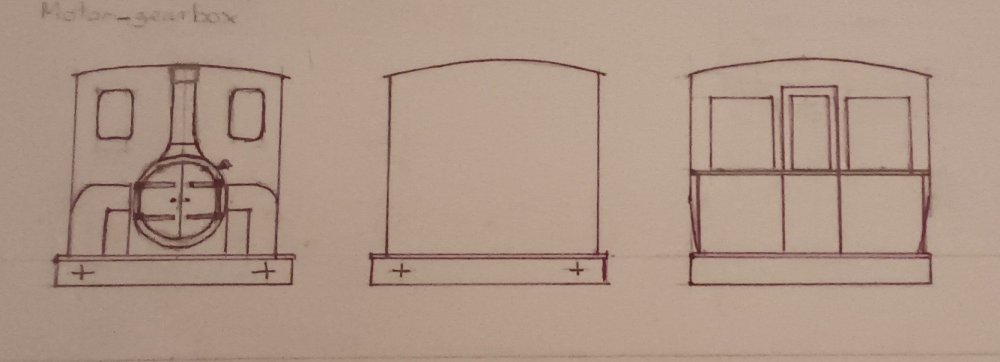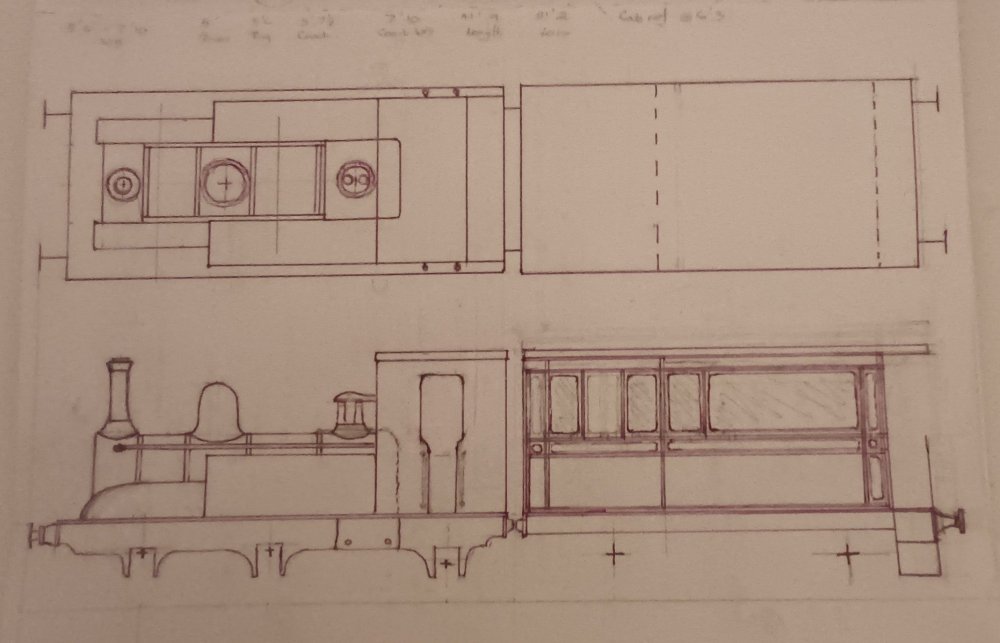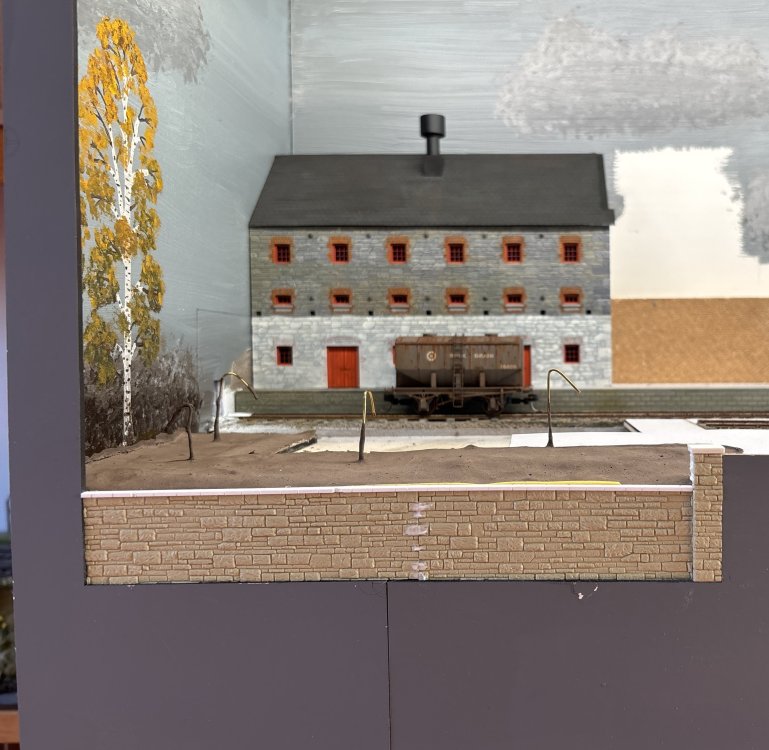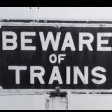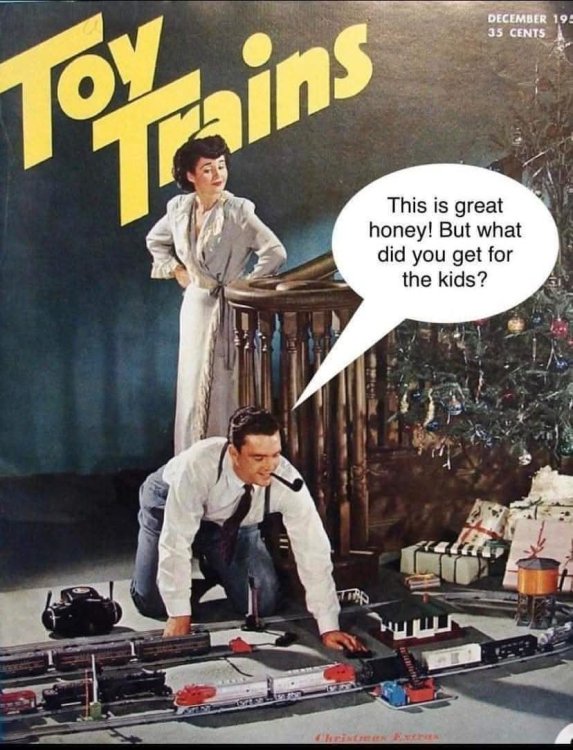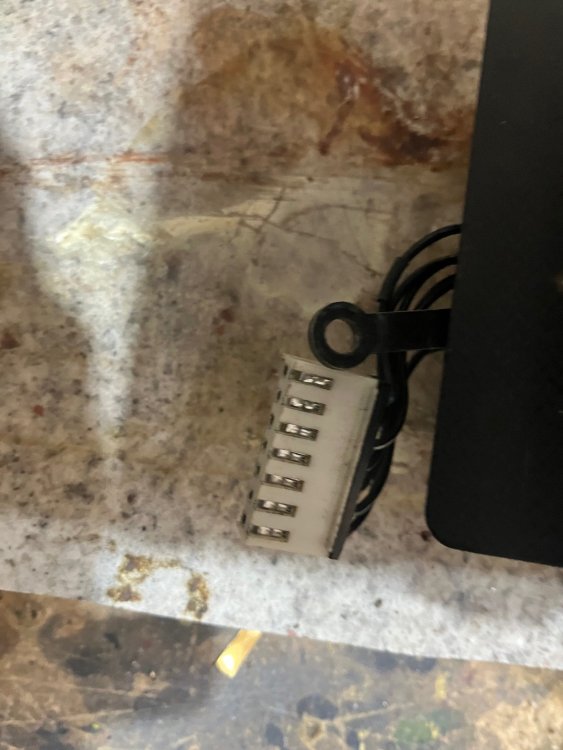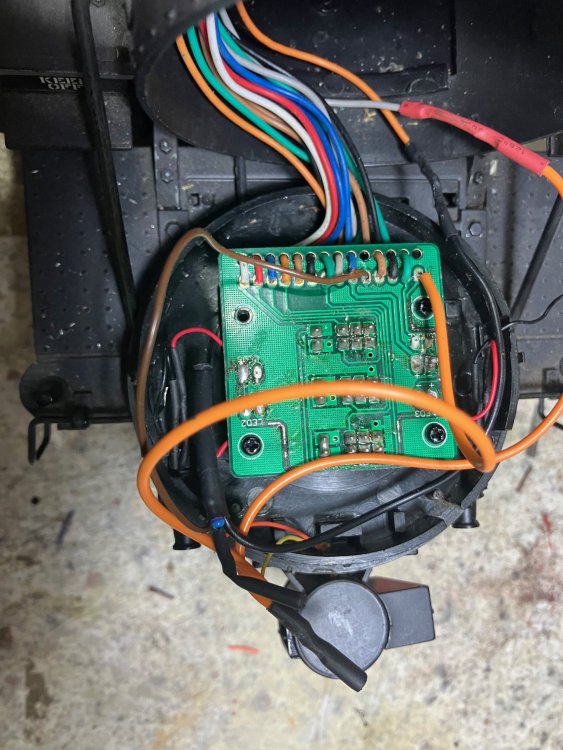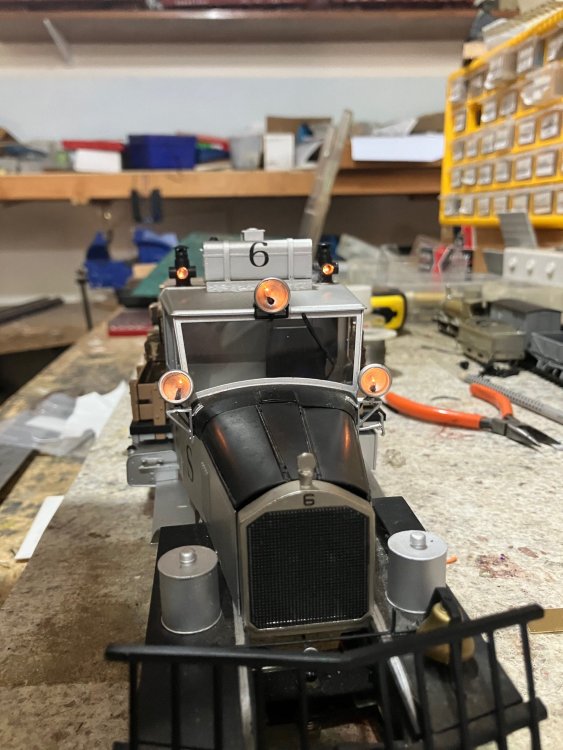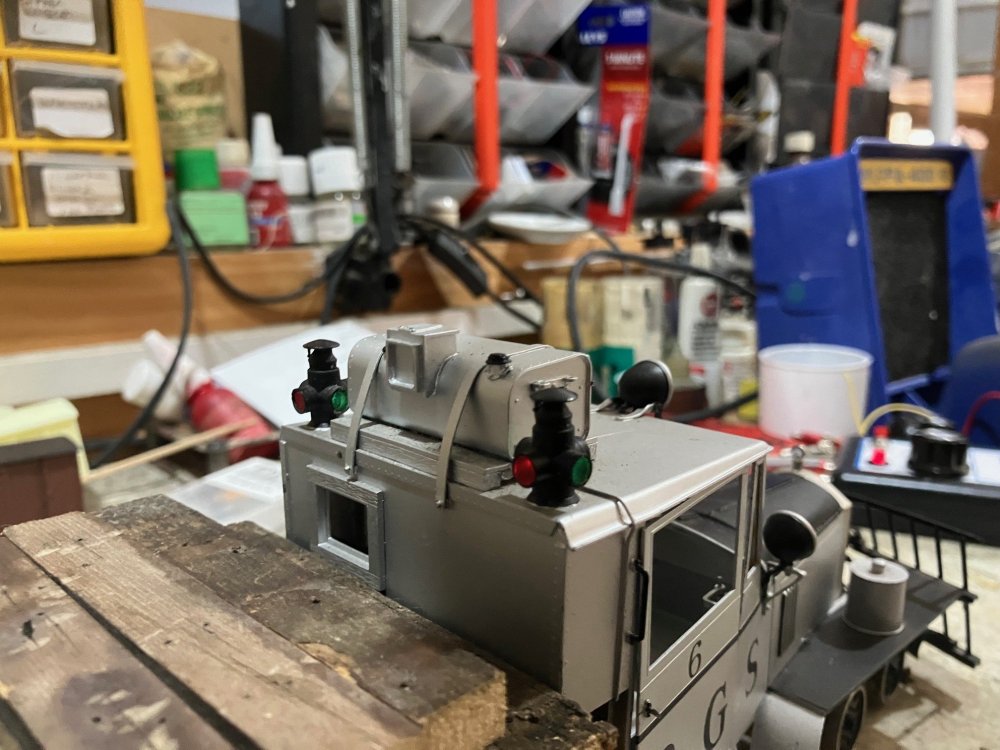All Activity
- Today
-
This is the carriage body at Inchicore. https://flic.kr/p/2pvxjSk I think there are several photos of this in the IRRS archive, by different gricers. Also this? https://flic.kr/p/2pw8RWP
-
Oh, I wish you had asked a week ago. I've just completed another trawl through tens of thousands of photos on Flickr and in hundreds of books, and I have definitely seen some photos of these on my way through. But I wasn't looking for them, so didn't record the links/reference. This is the only one I could find again quickly: https://www.flickr.com/photos/irishrailwayarchive/53813564175 I'm pretty sure there are lots of photos of a short carriage portion surviving at Inchicore. But it's easy to get confused with these pesky beasts: https://www.flickr.com/photos/irishrailwayarchive/53813564520
-
At some point this year, I want to build one of the above. Both were 0-4-2Ts, each with a four wheel coach semi permanently attached. The two Green Bibles both give some information, though far from definitive. For example, the GSWR version has an outline drawing, supposedly of Sprite, but photos in both books suggest it is Fairy because of the shape of the cab cut out and height of the coach. My own outline interpretations are shown below. So, there are a fair few gaps to fill, such as: Livery - presumably the loco would have been in lined GSWR black in the early 1900s, so would the coach have similarly been the dark purple lake of the time? The coach interior - the locos and pay coach were on the road six days a week, with Sprite covering over 1.2 million miles from 1873 to 1927 and presumably the inner half of the coach was partitioned from the more open rear? Am guessing much has been lost, not least because both units were withdrawn in 1927, but the Forum has an enviable reputation for digging up all sorts of gems, so I live in hope. Any information greatly appreciated. The models will certainly need to be scratchbuilt and will be in 7mm scale and 36.75mm gauge. The working timetable of 1901 suggests one of them would have called in at Northport Quay every other Wednesday or Thursday, which would make a nice feature, so here's hoping!I David Holman
-
Galteemore, my model will be fairly minimal featuring just two points and will be of the "Bitza station" school which was popularised perhaps by the late Iain Rice and carried on by James Hilton even more minimally! Mine will feature a goods loop with small stone & brick goods shed, a siding feeding a small agricultural merchants in corrugated iron. The line through the single platform ends under an oxide painted girder bridge, the line presuming to be closed beyond the bridge with a disused signal post in front of the bridge. The (small) station building will again be stone with brick quoins and will also act as a view block for the fiddle yard, for the bridge I found a good colour photograph showing what I considered perfect...can I find it now, can I heck. However in the meantime there are some points to build, if it helps anyone else I'm cheating here in that despite working to 21mm gauge I'm using Peco point plans for the templates. Peco track geometry is spot on despite having sleeper spacing to suit European spacing, so download the Peco templates and before printing them enlarge the image by 127% and hey presto 21mm gauge points with more or less (?) correct sleeper spacing. John Bruce.
-
Murphy 141 buffer replacement - has anyone done it?
Colonel replied to Mol_PMB's question in Questions & Answers
Indeed! One of those annoying things about what we are happy to live with. Given the likely viewing angles on the layout - presumably mainly side on - will the buffer spacings be that apparent? The layout as a whole already more than makes up for any minor discrepancy like loco buffers. -
PM sent.
-
@DJ Dangerous, you're forgiven. People, Dave sent me a photo of him in action tending to his poorly cats - but (at the risk of being politically incorrect) I also saw his "beautiful assistant". I should have trained as a vet ........ @Galteemore - you're dead right, I wouldn't have dared comment about Drew's cat! Paul, those must be the best builds of my vans. Simply super.
-
For sale Mark 2s £40 / 121s £160 + pp UKbased
2006ciarn replied to Gerard Murphy's topic in For Sale or Wanted
121s still available? -
"Voiding the Warranty" - Mol's experiments in 21mm gauge
Mol_PMB replied to Mol_PMB's topic in Irish Models
Back to the bitumen tank, but looking at the body this time. I'm beginning to wonder if there will be much left of this Bachmann tank wagon by the time I've finished with it! The bitumen tanks were lagged, so the domed end wasn't visible but instead the end of the lagging was flat. Well, almost. The upper half was vertical and the lower half angled in slightly. I used the laser-cutter to make some rings of 1.5mm thick plasticard which I stuck to the ends. Once set hard, I sanded down the lower half at an angle. I also made some discs of 1mm plasticard, with a half-engraved line across the diameter, to provide fold line. The ends are now stuck on. I've also removed the walkways and ladders and filled the associated holes. The next job is to fill the gaps around the end laminations, and leave them to set overnight before sanding smooth. You can just about see the taper on the lower ends here: Like this: -
Look for some help on European Digitrix stockists. I think of getting a DCC command station and controller. I had a look at some UK stockists and tried to calculate the import duty and VAT, its adding quite a bit to the costs. Has anybody dealt with any European stockists?
-
Order for replacement of 1980s Dart trains comes after years of indecision and delay – IrishCycle.com https://share.google/ZcXmqecPeUx3AqrL2
-
"Voiding the Warranty" - Mol's experiments in 21mm gauge
Mol_PMB replied to Mol_PMB's topic in Irish Models
One of the good things about this hobby is that it can be so varied. When I don't fancy working on something tiny and precise, I can just do some scenery instead. This morning I have made a simple retaining wall: I used some old Wills sheeting that I've had in stock for decades. With a bit of carving the stones at the joint, and some dabs of Matte Medium, I'm hoping the join won't be obvious once it's painted and weathered. -
...with the fada in the right places...
-
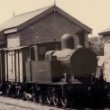
Murphy 141 buffer replacement - has anyone done it?
Galteemore replied to Mol_PMB's question in Questions & Answers
Oh this sounds so familiar! Suppose it’s a question of working out what will actually facilitate rather than hinder your modelling. -
It’s 0 scale (7mm) but the gauge is 32mm, rather than about 37mm for the 5’3”.
-
Murphy 141 buffer replacement - has anyone done it?
Mol_PMB replied to Mol_PMB's question in Questions & Answers
It's certainly possible. But is it worth the time and effort, and would homemade ones be a genuine improvement on what's there already? I've got a set of the right buffers in front of me, and I could just fit them. The downside would be that I then wouldn't have anything to use as a pattern if I (or others) wanted some more in future. Will I ever regauge the other two 141/181s I have in the stash? Quite possibly not. While some other forum members have kindly offered to buy a few sets, there's a risk that I couldn't produce them for a sensible price, and then there's the time and effort involved in managing the whole exercise. The best option might be just to forget the whole idea of making more. There's also a risk that this loco will sit unfinished forever waiting for buffers, which would be a shame after all the work I've put into it so far. Or if it enters traffic with its existing buffers, they'll never get replaced. Probably I need to revisit this when I'm feeling a bit more positive. -
Can’t imagine you voiced those feelings to Drew Donaldson Leslie! As I dimly recall, the cat had a very privileged role in his household. Probably miaowed in Irish too…
-
Feck your horse, I’ve a Honda Civic outside. Out with your claws, Leslie… Just like a cat!
-
Murphy 141 buffer replacement - has anyone done it?
Colonel replied to Mol_PMB's question in Questions & Answers
Is it worth considering assembling them yourself? Looks like three different diameter bits of tube, a square base on the buffer beam, with a rivet in each corner, plus the oval head. The latter perhaps the hardest to get right. Alternatively, stick a suitable piece of brass rod in the drill chuck and file the shanks. Back in the day, they'd use brass from round pin plugs. In 7mm scale,, not unusual to find drawing pins for the heads in buffer packs and to be fair, they can work well for round ones. -
Murphy 141 buffer replacement - has anyone done it?
Mol_PMB replied to Mol_PMB's question in Questions & Answers
The economics would make more sense if more (different) items were cast in the same mould. So I’m thinking of other similar-sized parts that I might need. Detail parts for the proposed MGWR 6-wheel coach (buffers, roof details) are an option. Also some G class detail castings, to go with a Worsley G611 etch, or with a G601 etch I might do myself. Bonnet-top vents, axleboxes/springs etc. Possibly a few wagon buffers. -
Yeah we have four cats (all male) and our teenager wants a horse! I had a largish stash of Leslie's wagons which hopefully I will get to build some day. We had a nice Christmas Day herself cooking turkey dinner for ma-in law and myself, while teenager spent day in their cave gaming and ordering in from kitchen. I charged the batteries on large scale locos so managed to run some trains out in the morning and home after tea. Day was warm and sunny though we are promised a downpour today, and for most of next week.
-
There may be a paws in the sales now I fear........
-
Back to the wreckbench to restore #464s headlight and get RGS Motor #6 head and marker lights when running in a forward direction. #464 headlight ceased to function after one of the jumper cables between the loco and tender failed several months ago. The wiring on the Bachmann K27 2-8-2 is quite complex with a circuit board in the tender and smoke box linked by a cable loom with two multiple connectors between loco and tender. The connections from the loom to the multi socket on the RHS of the loco wasn't in a great state when I picked up the loco well used second hand about 8 years ago, luckily most of the wiring was redundant since I converted the loco to on-board battery control ending up with one functional wire the -feed to the headlight which failed several months ago. The smokeboard circuit board control lighting functions, headlamp, marker, cab/possibly firebox lighting and redundant DC/DCC changeover and smoke unit switches. Original plan was to link the headlamp LED with the marker-light circuit but ended up blowing the marker light circuit instead!. In the end used a Kiwi style no 8 baler wire repair crude but effective. 1st did some testing with a multi meter and discovered that some of the loom and LED wiring did not follow the usual conventions for + - the negative lead to the headlamp was red and positive feed to the lighting circuit board white. To complicate things further I used orange and brown for + & - jumpers from the circuit board to the headlight. Actually managed to run some trains on Christmas Day. Thankfully #464s headlight fed through a resister now works, though I have not connected the marker (classification) lights. Apparrently marker lights were not usually illumiated in daylight. Motor #6 is fitted with very small filiment bulbs rather than LEDs, capture the atmosphere of 1930s 6v automobile headlights. Looks like the prototype may have kerosene marker lights, possibly from a caboose. The RGS was very much a boot strap operation that would make Forbes County Donegal extravagent in comparisson. Interestingly the entire RGS Goose (Motor) fleet has survived some in operating order on heritage lines and museums in Colorado & California, someone actually built a replica of the origonal goose Motor 1 which was used as a source of parts to build Motor 6 during the mid-1930s Getting #6 lights functioning going forward was basically a case of soldering a jumper between the F & R lighting pads on the radio receiver/decoder
-
I spent the day at a family gathering chez Daughter-the-Elder & her expert Christmas-dinner-making partner; within those premises dwell SIX cats.......
.png.c363cdf5c3fb7955cd92a55eb6dbbae0.png)
